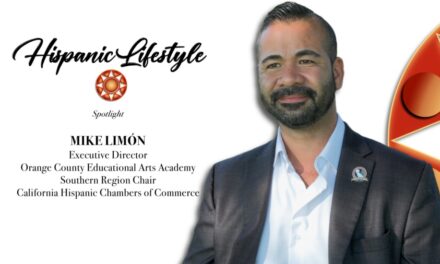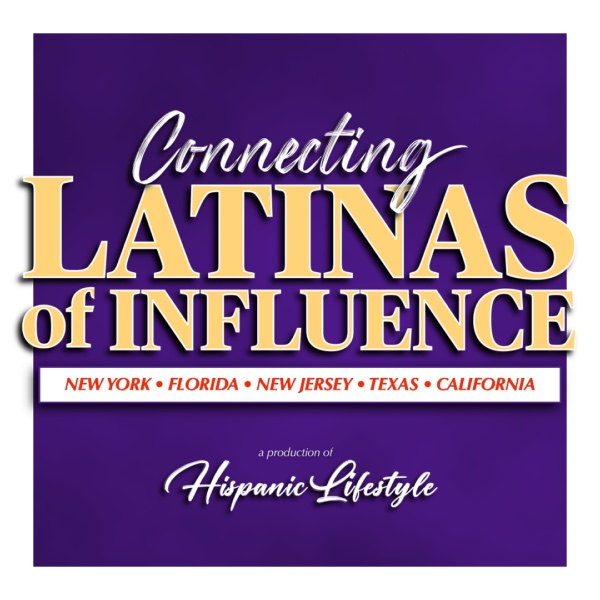
2024 U.S. Latino GDP Report Released

U.S. Latino GDP skyrockets to record $3.7 trillion, with growth rate outpacing China, India
Latinos helped prop up the U.S. economy during the most challenging days of the COVID-19 pandemic and then spearheaded the nation’s economic recovery, according to the latest U.S. Latino GDP report, released today by researchers from UCLA and California Lutheran University.
The total economic output, or gross domestic product, of Latinos in the U.S. reached $3.7 trillion in 2022, the researchers found, exceeding the historic $3.2 trillion mark set in 2021. The latest figure would make the U.S. Latino GDP the fifth largest GDP in the world for 2022 — greater than India, the United Kingdom and France.
Since its inaugural release in 2017, the report, which is currently produced annually by the UCLA Center for the Study of Latino Health and Culture and Cal Lutheran’s Center for Economic Research and Forecasting, has provided a detailed view of the large and rapidly growing economic contributions of Latinos living in the United States. UCLA’s David Hayes-Bautista, who co-founded the U.S. Latino GDP Project and the report series, first began the effort to track information on the Latino GDP in 2004.
The new findings show a continued upward trend in the economic performance of Latinos in the U.S, with their GDP rising from $1.6 trillion in 2010 to $2.8 trillion in 2019 before topping $3 trillion for the first time in 2021, in the midst of the COVID-19 pandemic.
“When COVID-19 struck, many analysts predicted that earlier Latino economic gains would be erased,” said David Hayes-Bautista, a distinguished professor of medicine at UCLA and co-author of the report. “But the U.S. Latino GDP has continued to roar on.”
During the pandemic years of 2019 to 2022, the average annual growth of real U.S. Latino GDP was 4.8%, compared with just 1.5% for the broader U.S. economy, the researchers found. Over that same period, Latinos were responsible for 41.4% of the growth in real U.S. GDP, despite comprising just 19.2% of the U.S. population.
In fact, the performance of Latinos during the pandemic was sufficient to make the U.S. Latino GDP the fastest-growing GDP among the world’s top 10 economies from 2019 to 2022, outpacing the GDP growth of economic powerhouses like China, India and the U.S. as a whole, which came a distant fourth.
“Examining the impacts of COVID-19 on the U.S. economy through the lens of the Latino GDP is very revealing,” said Matthew Fienup, executive director of the Center for Economic Research and Forecasting at Cal Lutheran and co-author of the report. “We believe that the economic data published in this year’s U.S. Latino GDP report illustrate just how vital Latino strength and resilience are for the nation’s economy.”
Key takeaways
- The U.S. Latino GDP reached $3.7 trillion in 2022, the highest mark since the figure was first tracked — and the fifth-largest GDP in the world — a new report by UCLA and Cal Lutheran shows.
- During the COVID-19 years from 2019 to 2022, the U.S. Latino GDP grew faster than the GDP of any of the world’s top 10 economies, including China and India.
- When compared with the GDPs of the world’s largest economies, the U.S. Latino GDP has been the third fastest-growing overall since 2010.
- While Latinos faced high death rates from COVID-19, their “healthy lifestyle advantage,” including greater life expectancy than non-Hispanic whites, has rebounded.
Over an even greater timespan, from 2010 to 2022, Latinos have shown that they are a major driver of economic growth in the U.S. During that period, the U.S. Latino GDP was the third-fastest-growing among the 10 largest GDPs in the world. And over that same period, the average annual growth of real U.S. Latino GDP was 4.2 percent, compared to only 1.7 percent for the broader U.S. economy.
COVID-19, Latinos and the return of the ‘Latino healthy lifestyle advantage’
Even as U.S. Latinos continued their prodigious economic output during the pandemic, they were struck particularly hard by COVID-19. Between 2020 and 2021, the coronavirus became the No. 1 cause of death for Latinos — but the third most common cause for non-Latinos.
The U.S. Latino GDP report shows that by 2022, however, the rate of COVID-19–related deaths among Latinos had dropped by more than 50% from its peak. While the 2022 rate was still slightly higher than for non-Hispanic whites, Latinos’ death rates from other causes, including heart disease, cancer, unintentional injuries and chronic respiratory diseases, remained significantly lower — rebounding a phenomenon known as the “Latino healthy lifestyle advantage.”
That reassertion can be seen in Latino life expectancy numbers. In 2019, Latinos were expected to live three years longer, on average, than non-Hispanic whites, but that advantage dropped to just six months at the height of the pandemic. By 2022, it had rebounded to two-and-a-half years.
“Just this past spring, a published study announced the disappearance of the Latino healthy lifestyle advantage,” Hayes-Bautista said. “But our latest report marks the return of the Latino healthy lifestyle advantage as one of the factors that drives the Latino GDP’s tremendous growth.”
The Latino GDP Project releases additional research reports throughout the year on the large and rapidly growing economic contributions of the Latino population in targeted states and major metropolitan areas. This August, the researchers also produced the inaugural Latina GDP report, released on Women’s Equality Day, which details the vital impact of Latinas on the U.S. economy.
“Hard work, self-sufficiency, optimism, perseverance—these are the characteristics that underly the strength and resilience of U.S. Latinos,” said Fienup. “We believe these same characteristics will continue to drive growth in the overall United States economy for years to come.”
##
History of the Latino GDP Project
The effort to calculate the Latino GDP began with David Hayes-Bautista around 2004. His idea was to use established government data programs to calculate a robust summary statistic for the economic performance of U.S. Latinos. The original U.S. Latino GDP algorithm was developed by Hayes-Bautista with Werner Schink, former Chief Economist of the California EDD. They produced the inaugural U.S. Latino GDP Report in 2017. After Schink’s untimely passing in 2018, Hayes-Bautista sought out economists Dan Hamilton and Matthew Fienup, of California Lutheran University. Hayes-Bautista, UCLA colleague Paul Hsu, Hamilton, and Fienup made refinements to the Latino GDP methodology and have produced annual Latino GDP Reports every year since 2019.
With generous support from Bank of America, the Latino GDP Project was significantly expanded beginning in 2021 and now includes calculation of the Latino GDP for targeted states and major metropolitan areas as well as the inaugural Latina GDP Report, released in August 2024. For more information and to access reports, visit www.LatinaGDP.us and www.LatinoGDP.us
Center for the Study of Latino Health & Culture (CESLAC)
Since 1992, CESLAC has provided cutting-edge research, education and public information about Latinos, their health and their impact on California’s economy and society. CESLAC is a resource for community members, business leaders and policy makers who want to gain insightful research and information about Latinos. It offers unparalleled insight into Latino issues through an approach that combines cultural research, demographic trends, and historical perspective. In addition, it has helped the University of California meet its public service goal by increasing the effectiveness of their outreach to the Latino community.
Center for Economic Research & Forecasting (CERF)
CERF is a nationally recognized economic forecasting center. CERF economists Matthew Fienup and Dan Hamilton are members of the Wall Street Journal Economic Forecasting Survey, the National Association of Business Economics (NABE) Economic Outlook survey, and the Zillow (formerly Case-Schiller) Home Price Expectations Survey. They were recipients of 2019, 2020 and 2021 Crystal Ball Awards for the Zillow Home Price Expectations Survey, having earned multiple top-3 rankings among more than 100 competing forecasts. CERF is housed at California Lutheran University, a federally designated Hispanic Serving Institution




















